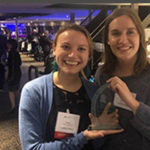Annual giving, though just one aspect of a strong fundraising program, is the foundation upon which a successful program is built. Providing revenue is paramount, but equally as or maybe even more important, annual giving provides the pipeline for major and planned gifts.
The components of successful annual giving programs have been evolving over the last several years with the proliferation of email and social media. Direct mail continues to be the primary means of attracting new donors and garnering additional gifts from existing donors, but online strategies are now an integral part of the annual giving “toolkit.” Integrating efforts to reach a wider audience has allowed organizations to raise funds, increase awareness and mobilize support from a broader constituency.
Healthcare fundraising is no different―but why would someone visit a hospital website, open an email from a healthcare organization or follow one on Facebook? There are lots of reasons but most do not involve philanthropy.
What then is the hook? Advocacy-based organizations support a cause that donors espouse, visitor-based institutions have something of specific interest―healthcare organizations offer something very different.
The goal of healthcare fundraising is always to connect donors and prospects to patients and caregivers rather than to the institution itself. While most people don’t feel that they as an individual can conquer cancer or make a sick child well―or even help in those heroic efforts―they can believe that their gift has a direct and positive impact on a single patient who received high-quality care and was treated with compassion. This is what resonates most with donors and prospects and this should be the central theme throughout all fundraising communications.
Creating connections in 2014 starts with an online presence. Digital channels can provide a wealth of opportunities for hospitals and health-related organizations. Social media is just that―social―and a place where the people who are the heart and soul of an organization can show who they are, what they do and why they need you.
The institution is no longer a building or a facility, but real people doing great things that they want to share. Donors, friends and followers can now interact through posts, tweets, pins and ultimately, gifts.




